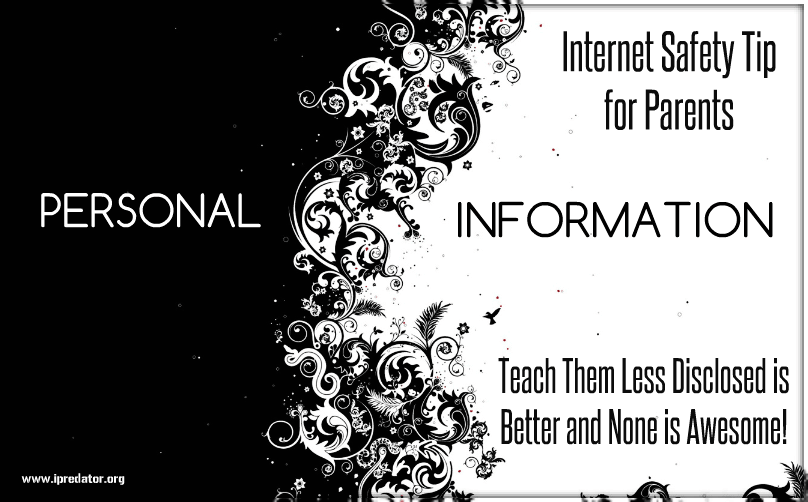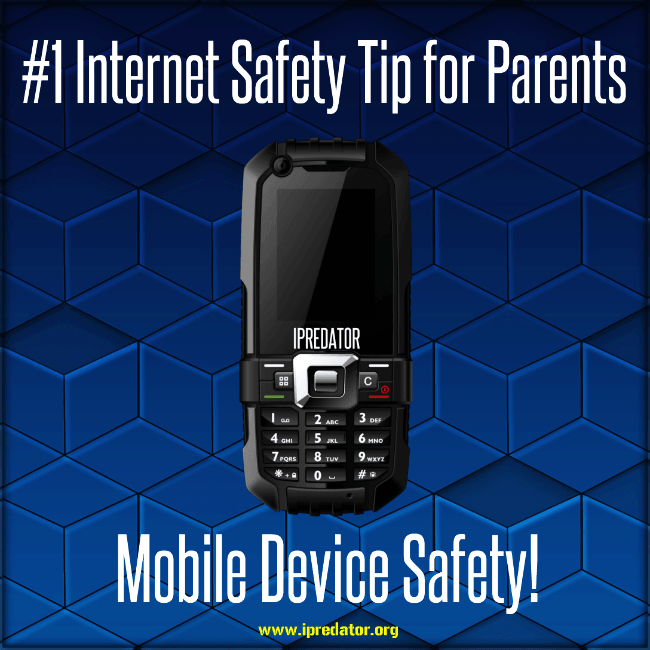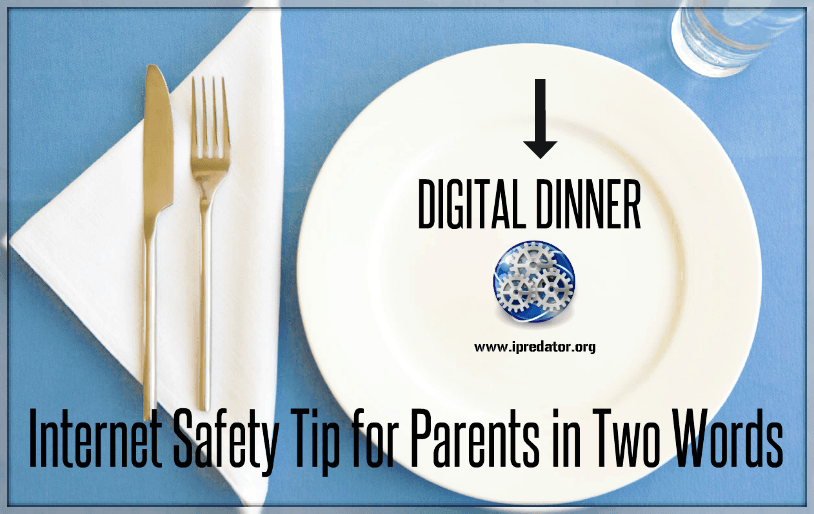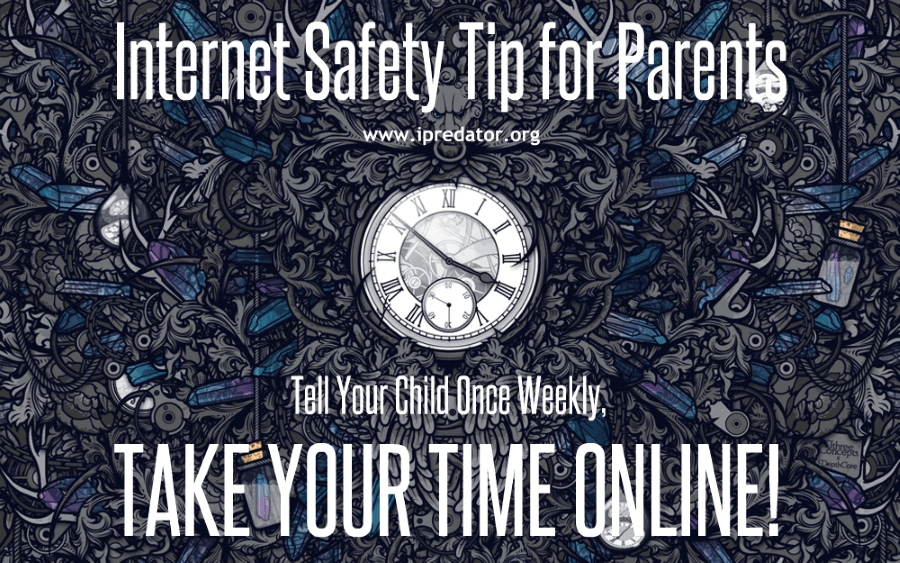Internet Safety Guide for Parents
by Michael Nuccitelli, Psy.D.
The “Parents Internet Safety Guide” is for parents, primary caregivers and educators addressing cyber-attack prevention and internet safety. Authored by Michael Nuccitelli Psy.D., a New York State licensed psychologist and author of the iPredator construct, he provides internet safety tips and cyber-attack prevention strategies to help insulate children from being cyber attacked by peers and adults engaged in online sexual predation.
iPredators are always preparing for children & teens around the country to return to school and look to the Internet and their Information and Communications Technology for their academic and social networking needs. The beginning of a new school year guarantees a significant increase in online usage, and most important to iPredators, patterned and predictable times of online usage.
Now that children will be back to class and have schoolwork, their time spent online significantly increases along with patterned and predictable times they access the Internet. Online sexual predators cyberbullies and cyberstalkers prepare themselves for what they hope will be another year of unsuspecting groups of vulnerable, discouraged and high-risk taking children and teens.
In addition to online sexual predators, children and teens who are cyberbullies and cyberstalkers will fill cyberspace looking to taunt and harass their peers. For proactive parents who plan to practice & institute internet safety, I have compiled my quick checklist & tips to help make sure all your bases are covered. The list provided is a quick injection of Internet safety awareness. I hope my Internet safety packet helps insulate your child from abuse and leads to a safe and enjoyable school year.
As Information and Communications Technology (ICT) becomes more widespread, cyber-attack prevention, education and protection are areas requiring immediate attention. The Information Age has many benefits to humanity, but it is vital to identify and prevent the malevolent and nefarious elements that exist in cyberspace and Information and Communications Technology.
The typologies of iPredator include cyberbullying, cyber harassment, internet trolls, cyberstalking, cybercrime, online sexual predation and cyber terrorism. Within this construct, cyber harassment is the adult form of cyberbullying and used when the perpetrator is an adult. The definition and motivations of iPredator and Cyberstealth are as follows:

iPredator Definition
iPredator: A person, group or nation who, directly or indirectly, engages in exploitation, victimization, coercion, stalking, theft or disparagement of others using Information and Communications Technology [ICT]. iPredators are driven by deviant fantasies, desires for power and control, retribution, religious fanaticism, political reprisal, psychiatric illness, perceptual distortions, peer acceptance or personal and financial gain. iPredators can be any age or gender and are not bound by economic status, race, religion or national heritage. iPredator is a global term used to distinguish anyone who engages in criminal, coercive, deviant or abusive behaviors using ICT. Central to the construct is the premise that Information Age criminals, deviants and the violently disturbed are psychopathological classifications new to humanity.
Whether the offender is a cyberstalker, cyber harasser, cybercriminal, online sexual predator, internet troll, cyber terrorist, cyberbully, online child pornography consumer/distributor or engaged in internet defamation or nefarious online deception, they fall within the scope of iPredator. The three criteria used to define an iPredator include:
- A self-awareness of causing harm to others, directly or indirectly, using ICT.
- The usage of ICT to obtain, exchange and deliver harmful information.
- A general understanding of Cyberstealth used to engage in criminal or deviant activities or to profile, identify, locate, stalk and engage a target.
Unlike human predators prior to the Information Age, iPredators rely upon the multitude of benefits offered by Information and Communications Technology [ICT]. These assistances include exchange of information over long distances, rapidity of information exchanged and the infinite access to data available. Malevolent in intent, iPredators habitually deceive others using ICT in the abstract and artificial electronic universe known as cyberspace. Therefore, as the internet naturally offers all ICT users anonymity, if they decide, iPredators actively design online profiles and diversionary tactics to remain undetected and untraceable.
Cyberstealth, a sub-tenet of iPredator, is a covert method by which iPredators attempt to establish and sustain complete anonymity while they engage in ICT activities planning their next assault, investigating innovative surveillance technologies or researching the social profiles of their next target. Concurrent with the concept of Cyberstealth is iPredator Victim Intuition [IVI], an iPredator’s IVI is their aptitude to sense a target’s ODDOR [Offline Distress Dictates Online Response], online & offline vulnerabilities, psychological weaknesses, technological limitations, increasing their success of a cyber-attack with minimal ramifications.

10 INTERNET SAFETY STEPS
1. FBI Parent’s Guide: Visit the FBI’s website and thoroughly read their excellent overview called “A Parent’s Guide to Internet Safety.” Before moving on to the next step, make sure you have written and have easy access to your local police department’s phone number. To download online, enter Google or your favorite search engine the term “FBI Parent Resources.” If you are reading my guide online, here is the direct link: FBI Kids
2. Offline Distress Dictates Online Response (ODDOR): If you have already read my construct, iPredator, you will immediately recognize this concept. A child is particularly prone to engage in high-risk behaviors online if he/she is feeling discouraged, angry or distressed. Do not move on to the next step until you are confident your child is feeling encouraged, stable or being monitored by a professional or trusted loved one. Of the hundreds of articles and studies I have researched, a child’s psychological status highly correlates with their online behaviors. If there are ongoing conflicts at home, recent traumatic events or any other anxiety and/or distressing events in the home, it is especially important to monitor your child’s online usage.
Just as important as your child’s home environment is your child’s school environment. Given you cannot be with your child when they are at school, it is important to keep up regular contacts with school officials regarding your child’s attitudes and behaviors on school grounds. Although academics in school are a priority, your child’s demeanor with teachers and fellow students speaks to their psychological and emotional welfare. Research has causally linked a child’s school and home environments to their online activities.
3. Personal Information Prevention Planning: The number one and most critical issue to address with your child is the amount of personal information they share online. Getting your child to practice minimal release of their name, contact information, photographs and passwords to their social sites is highly desirable. If I were to make an approximation of the several hundred articles, I have read on Internet safety and cyber security, 99% of them list restriction of sharing personal information online being vital to Internet safety.
It cannot be emphasized enough, but children who disclose their contact information, personal information and images freely are at a higher risk of being targeted by an iPredator. The goal as an Internet safety proactive parent is not to totally restrict or forbade your child from sharing personal information, but to educate them on being extremely cautious and consistently aware when, why and what they disclose to others.
4. Peers, Parents & the PTA: Given you cannot monitor your child’s online activities when they are not in your presence, its paramount to access those people who will be. Your child’s friends, their friend’s parents and their school are the three prime social targets you should be in regular contact with. The goal is to initiate and sustain open communication with your child’s friends and their parents regarding Internet safety expectations. Just because you have restricted your child from certain online activities does not mean your child’s friends are restricted or their parents have online house rules.
Using your capacity to be cordial and polite, keep up a consistent open dialogue with your child’s social circles. Regarding your child’s school environment, it is important to have an open dialogue with school officials and/or the PTA to make sure Internet safety and cyber security mechanisms are in place. Before the school year begins, contact school officials and investigate their Internet safety measures, educational emphasis on Internet security and rules for cyberbullying, cyberstalking, sexting, mobile device usage during school hours and cybercrime related to adolescent life.
5. Know Your Child’s Social Networking Sites: Facebook, Twitter and Instagram are among the most popular social networking sites children and teens look to for their cyber identity, digital reputation and online social relationships. Thanks to the internet and digital technology, many children and teens look to the digital universe for their developmental milestones and self-esteem.
Unfortunately, iPredators also choose these sites as their most favored websites spending most of their free time trolling for unsuspecting, naïve, discouraged or high-risk children. Given the 400-500 popular global social sites and growing, it is of the utmost importance to spend time with your child discussing digital citizenship and cautious online communications.
6. Smartphones & Cellphones Need More Smarts: A smart phone is a wireless phone with voice, messaging, scheduling, e-mail and Internet capabilities. Research and marketing trend experts’ project sales of smartphones will exceed personal computers by the end of 2012 and grow with each passing year. In 2012, 500 million smartphones were sold. Despite the benefits of mobile digital technology, children and teens are becoming dependent on their cell phones more than ever before. Recent studies have suggested children who are depressed, anxious and/or discouraged spend more time interacting with their mobile devices and less time being typical children.
It is vital you monitor the amount of time your child spends on their cell phone and contact your phone carrier about additional security features that they may offer. If a cellphone or smart phone is in your child’s future, be sure to have the store you purchase the phone from install or set up all the necessary safety and filtering devices and software.
7. Weekly Digital Dinner: The term may sound absurd but making it a habit to discuss the family’s digital habits at least once weekly during dinner is both proactive and helpful. In today’s dual economy and single parent households, dinnertime is one of the few weekly events that are consistent, predictable and social. As just mentioned, it is the family’s digital habits and interactions discussed and not the child’s weekly interrogation. By all family members discussing their Internet activities, children will feel more comfortable to disclose information relevant to Internet safety and their online activities.
During these weekly discussions, always make sure to discuss the importance of being extremely cautious of sharing personal information online. It is also highly recommended to discuss positive, beneficial aspects and stories about online usage to make the weekly discussions fair and balanced. Prior to every weekly digital dinner discussion, it is highly recommended to announce to all involved that any information shared regarding online activities will not cause punishment, retribution or embarrassment. This weekly announcement may be redundant, but it reaffirms to your children that they will not be punished for their mistakes or irresponsible behaviors.
8. House Rules Include Online Rules: Just as children have curfews, responsibilities and chores, they also should have online rules & regulations. Based on my conclusive findings, there are no universal online rules that can be applied to children of all ages. The three that I feel are relevant to children of all ages and are; cautious disclosure of sharing personal information online, never meeting someone they have met online without supervision and never sharing their passwords to anyone other than their parents. Other than this triad, parents should establish house online rules based on their child’s age, developmental maturity, knowledge and persistence of Internet safety.
In addition to the trifecta of obvious rules I mention, research has led me to conclude that nighttime online usage and time patterns should be considered when negotiating or designing online rules. Research on iPredators have concluded that they prefer to troll for their victims during evening hours and at time intervals when the child or children they are targeting typically log on to the Internet. The iPredator learns online log on habits and sets their online schedule to match the child they are targeting.
9. Emphasize the Child’s Developmental Achilles Heel: Part of being an effective parent is being a creative parent. All children, starting anywhere from 7-10 years of age, develop what is commonly called self-awareness. Once self-awareness begins, the child begins to worry how their peers perceive them. As they continue physical & psychological maturation, this fixation on self-image, popularity and peer acceptance becomes their primary driving forces until they have finished college. Knowing your child will be experiencing these overly dramatic & emotionally charged events, you can use them to your advantage regarding their online activities. Instead of telling your child “NO,” educate them on how images and information we share online can last for years.
Just as rumors of friends spread, online rumors and embarrassing images can go “viral.” Directly connecting your child’s developmental fears to their online behaviors of disclosing information is an effective and natural Internet safety technique. When done in a kind, respectful way, this method for teaching your child to be cautious of sharing personal information can be highly effective.
10. Complete Parental Control? No Such Thing: With the trends of today’s online community and technological advancements, insulating your child from iPredators and keeping them safe online has ever been more challenging. Ranging from home computers to mobile digital technology, children have access and exposed to multiple forms of online activities and devices. Even if you use content blockers, filters, trackers or parental control software, children have ways to get around these if their heart and minds are set on engaging in high-risk online activities. If, like me, you are not a digital technology expert, it is best to rely on the professionals.
Prior to purchasing security software or hardware, contact a trusted source. In every community, someone either your friends or a colleague knows is a digital technology expert. Given the market is flooded with hundreds of products, services and methods, contact your local expert source and rely on their recommendations. Secondly, contact your phone and Internet service provider for what they recommend protecting your child.
I have provided you with a short, but thorough and effective Internet safety tips checklist to help reduce the chances your child becomes a target of online predators, cyberbullies and/or cyberstalkers. The Internet, digital technology and mobile devices will continue to influence all children as their peers, advertising and cultural trends place pressure upon them to have the latest smartphones and access to the most popular social networking sites.
If it has not happened already, I guarantee your child will approach you on many occasions pleading for the newest mobile device and/or wanting to join the growing number of social sites that will be in fashion in the future. The key to being a proactive parent is making the effort to learn about iPredators and Internet safety. The most important Internet safety advice to protect your child can be summed up in one statement as follows: An iPredator will always move on to other victims when a parent takes the time to be proactive, ready and protective.

The factors most problematic for children include inappropriate personal information disclosure, high-risk ICT behaviors and minimal iPredator awareness. As part of my Internet safety packet for parents, below are twenty statements taken from the OPPC to be used as a quick checklist with your child. They are as follows:
- 1. The child does not post or share sexual information online with peers or adults.
- 2. The child does not have unknown people on his/her “buddy” or “friends” list.
- 3. The child does not engage in viewing or downloading pornography online sent to them by online contacts.
- 4. As an Internet safety savvy parent, you know children who interact with online strangers and engage in other risky online behaviors are significantly more likely to receive aggressive sexual solicitations.
- 5. As an Internet safety savvy parent, you know teen females constitute a higher proportion of iPredator victims than teen males, but teen males who identify as gay or questioning their sexual orientations are at a higher rate of online victimization.
- 6. As an Internet safety savvy parent, you know the fundamental differences between a Pedophile and Child Molester.
- 7. As an Internet safety savvy parent, you know sexual solicitations are defined as requests to engage in sexual activities or sexual talk, or to give personal sexual information.
- 8. As an Internet safety savvy parent, you know to discourage your child from posting images, videos or other personal information on social networking sites is dangerous.
- 9. As an Internet safety savvy parent, you know the similarities and differences of the Child Molester & Pedophile and their online involvement patterns.
- 10. As an Internet safety savvy parent, you know the act of violence is rare in Internet initiated sex crimes.
- 11. As an Internet safety savvy parent, you know iPredators seek to develop relationships with their victims before they introduce sexual topics.
- 12. As an Internet safety savvy parent, you know iPredators use child pornography to groom and seduce children.
- 13. As an Internet safety savvy parent, you know to discourage your child from interacting with unknown adults online and refrain from sending photographs or webcam screen shots for any reason.
- 14. As an Internet safety savvy parent, you know a sexual relationship between an adult and underage adolescent is criminal, against the law and dangerous.
- 15. As an Internet safety savvy parent, you are proactive in helping your child feel accepted and loved reducing their chances of being targeted by iPredators.
- 16. As an Internet safety savvy parent, you are proactive in focusing on developmental concerns relevant to your child, including independence, sexuality and romance.
- 17. As an Internet safety savvy parent, you are proactive in focusing on sexual feelings, urges and curiosity that are paramount to a child.
- 18. As an Internet safety savvy parent, you educate your child if developmentally appropriate, about the dynamics of child molesters, pedophiles, their online tactics and other non-forcible sex crimes.
- 19. As an Internet safety savvy parent, you educate your child if developmentally appropriate, that it is normal to have strong sexual feelings, but wrong for adults to exploit those feelings in children and teens.
- 20. As an Internet safety savvy parent, you educate your child, if developmentally appropriate, about the criminal nature of many aggressive sexual solicitations offline and online.

FACTORS IPREDATORS INVESTIGATE TO TARGET A CHILD
Internet safety & cyber security is vital to all online users and below is a list of factors sought by iPredators searching for their next child target. Just as classic criminals can “case” a home or choose the most vulnerable child to abduct, the iPredator is able to do the same using information they compile from a variety of online sources and contacts.
iPredator is a global term used to distinguish all online users who engage in criminal, deviant or abusive behaviors using Information and Communications Technology. Whether the offender is a cyberbully, cyberstalker, cybercriminal, online sexual predator, Internet troll or cyber terrorist, they fall within the scope of iPredator.
Cyberstealth: Cyberstealth, a concept formulated along with iPredator, is a term used to define a method and/or strategy by which iPredators use Information and Communications Technology (ICT), if they so choose, to establish and sustain complete anonymity while they troll and stalk a target. Given the Internet inherently affords everyone’s anonymity, Cyberstealth used by iPredators range from negligible to extraordinarily complex and multi-faceted.
The rationale for using “stealth” in the suffix of this term, serves to remind parents and all online users the primary intent fueling iPredators. This intent is to hide their identity by designing false online profiles, identities, covert tactics and methods to make sure their identities remain concealed reducing their probability of identification, apprehension and punishment.
Therefore, as the Internet naturally offers all ICT users’ anonymity if they decide, iPredators actively design online profiles and diversionary tactics to remain undetected and untraceable. Cyberstealth is a covert method by which iPredators can establish and sustain complete anonymity while they engage in ICT activities planning their next assault, investigating innovative surveillance technologies or researching the social profiles of their next target. Concurrent with the concept of Cyberstealth is iPredator Victim Intuition (IVI.)
By using Cyberstealth, an iPredator’s IVI is their aptitude to sense a child’s online vulnerabilities, weaknesses and technological limitations increasing their success with minimal ramifications. The methods iPredators use in their Cyberstealth strategies to home in on and choose a child target are as follows:
- 1. The amount of personal information your child discloses online.
- 2. The frequency your child discloses their contact information online.
- 3. The content of the information your child discloses online.
- 4. The lack of Internet safety measures your child institutes online.
- 5. Your child’s willingness to discuss sensitive issues online. These issues include sexual topics, financial information, their physical location, parental or adult monitoring of their online activities, experiences of distress at home, work, school and interpersonal or intrapersonal issues.
- 6. The amount of time your child spends online.
- 7. The type of information your child discloses on their social networking profiles.
- 8. Your child’s offline demeanor communicated online leading the iPredator to conclude your child will be an easy target.
- 9. The non-response or lack of assertive confrontation by your child or you to respond to negative information by posted by your child or sent to your child.
- 10. Your child’s probability of not having social system support, legal/law enforcement support or knowledge of intervention strategies if cyber attacked that are communicated online.
- 11. The quantity and themes of images and/or videos your child shares online.
- 12. The pattern of “likes” and “dislikes” your child discloses on their social networking site profiles.
- 13. The frequency your child changes their profile images and information on their social networking profiles.
- 14. The images and/or videos showing your child’s economic status, the layout of their residence or their material objects they or you own.
- 15. The images, videos and posts related to your child’s choice of material objects available for public consumption.
- 16. The images, videos and posts related to your child’s lifestyle available for public consumption.
- 17. The images, videos and posts related to your child’s needs and desires available for public consumption.
- 18. The images, videos and posts suggesting your child is suffering from psychological and/or psychosocial dysfunction.
- 19. Your child’s behavioral patterns regarding their mobile devices and how often they access and use mobile device applications.
- 20. Your child’s behavioral patterns and interactions when engaged in interactive gaming.
Although there are other factors an iPredator uses in their repertoire to locate and target a victim, the eighteen factors listed are recommended to evaluate by all online users to reduce their chances of becoming an iPredator target.
The Internet safety tips for parents provided in this packet are vital to learn and should always be applied during your child’s year. Even though the back-to-school timeline is particularly important for practicing Internet safety and cyber security, protecting your child from iPredators is a year-round endeavor. Think of the Internet, cyberspace and all the digital devices your child uses daily as both a beneficial tool for learning and an instrument requiring a cautious approach.
Never forget the internet is a mere child celebrating its birthday in 1983. From a communications standpoint, compared to all other forms of communicating, Information and Communications Technology and the internet are infants taking their first steps.
It is not necessary to be as technologically advanced as your child is as it is to be aware that iPredators lurk in cyberspace. Awareness of information technology, the Internet, Internet culture and how your child’s developmental and psychological states affect their interactions online begins with an inquisitive approach.
Whether you think you are positive what your child does and does not do online has no relationship to what iPredators have in mind. Asking your child questions, offering your child advice, educating your child and regularly engaging in discussions with your friends, loved one and peers all build an Internet safety strategy few iPredators can penetrate.
The Information Age is here to stay for decades to come and your children are enveloped by electronic devices. Since this is the reality of our society, it is both vital and mandatory to spend a little time learning what it means to be a child growing in an information technology environment.
“The important thing is not to stop questioning. Curiosity has its own reason for existing.” Albert Einstein (1879-1955)
To effectively educate, evaluate, investigate or advise any Information and Communications Technology (ICT) user on Internet safety, whether they are a child, adult, group or business, it is paramount to grasp the basic concepts and terms vital to all ICT users. The importance of ICT and the Internet to humanity is different to everyone and as unique as a fingerprint.
For some, ICT and the Internet are nothing more than tools of convenience for conducting mundane tasks. For others, their social, scholastic, business and/or financial affairs disclosed online are crucial to their life functioning, self-esteem, self-worth, success and perceptual world. In an abstract way, ICT and the Internet are extensions of the human mind but made available to all who engage in benevolent & malevolent activities.

Free Internet Safety Inventory Links
- iPredator Probability Inventory – 330 (IPI-330)
- iPredator Probability Inventory – Adult (IPI-A)
- iPredator Probability Inventory – Business (IPI-B)
- iPredator Probability Inventory – Cyberbully (IPI-CB)
- iPredator Probability Inventory – Cyberbully Abuser (IPI-CBA)
- iPredator Probability Inventory – Cybercrime (IPI-C)
- iPredator Probability Inventory – Cyberstalking (IPI-CS)
- iPredator Probability Inventory – Educator (IPI-E)
- iPredator Probability Inventory – Internet Predator (IPI-IP)
- iPredator Probability Inventory – Pediatric (IPI-P)
- iPredator Probability Inventory – Psychologist (IPI-PSY)
- iPredator Probability Inventory – Teen (IPI-T)
Free Internet Safety Checklist Links
- Adult Internet Safety Checklist (AISC)
- Business Internet Safety Checklist (BISC)
- Cyberbully Abuser Checklist (CBAC)
- Cyberbullying Target Checklist (CBTC)
- Cybercrime Protection Checklist (CCPC)
- Cyberstalker Identification Interview (CSII)
- Cyberstalking Prevention Checklist (CSPC)
- Digital Reputation Protection Checklist (DRPC)
- Educator Internet Safety Checklist (EISC)
- Internet Safety Checklist Psychologist (ISCP)
- Online Predator Prevention Checklist (OPPC)
- Parent Cyber Safety Checklist (PCSC)
- Pediatric Internet Safety Checklist (PISC)
- Teen Internet Safety Checklist (TISC)
Michael Nuccitelli, Psy.D.
Michael Nuccitelli, Psy.D. is a NYS licensed psychologist, cyberpsychology researcher and online safety educator. In 2009, Dr. Nuccitelli finalized his dark side of cyberspace concept called iPredator. Since 2010, he has advised those seeking information about cyberbullying, cyberstalking, cybercriminal minds, internet addiction and his Dark Psychology concept. By day Dr. Nuccitelli is a practicing psychologist, clinical supervisor and owner of MN Psychological Services, PLLC. After work and on the weekends, he volunteers helping online users who have been cyber-attacked. Dr. Nuccitelli’s is always available to interested parties and the media at no cost. This website and everything created by Dr. Nuccitelli is educational, free and public domain.

